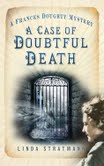Bringing the Past to Life
By Linda Stratmann
 If you are contemplating writing historical fiction then you will already have a fascination for the period you have chosen, and will have read widely on the subject. The idea of doing further research for your book will not daunt you; rather this is something you are looking forward to.
If you are contemplating writing historical fiction then you will already have a fascination for the period you have chosen, and will have read widely on the subject. The idea of doing further research for your book will not daunt you; rather this is something you are looking forward to.
My own interest is the nineteenth century, which is wonderfully accessible, through books, letters, diaries, and photographs. Sometimes, I want to lose myself in a Victorian street scene, getting close to the picture, shutting out the world around me, and imagining myself there, experiencing the sights, the sounds and the smells. I want to feel that I am actually walking down that street, as only then do I believe that I can take my reader there.
Once you have established what your characters wore and what they ate and what their working day was like your task is far from over. One of the biggest difficulties that writers confront is presenting a convincing picture of how historical characters thought and spoke. Contemporary Victorian fiction is not the best source for this. The carefully crafted language of fiction is not the same as the flow of real speech.
We are not so very different from the Victorians; we talk about our daily lives but also discuss what is in the news. Historical newspapers are a wonderful and often overlooked source of material for the fiction writer, and nowadays many are available online. I always read the national and local news for the period covered by my books, which will tell me what my characters might be discussing, and what events were informing their thoughts. The newspapers will also carry details of the prevailing weather, which sometimes leads to inspiration for the plot. For example the book I am writing at present An Appetite for Murder, takes place in London in early 1881 and I discovered that the city was trapped in a huge freeze for two weeks in January. It was a brilliant opportunity, which I at once integrated into the book!
The other essential material in newspapers is the spoken word. There are no sound recordings of Victorian speech, but a wealth of shorthand reports. Since this was the only way of recording speech, and accuracy was essential in courts of law and parliament, stenographers had to be highly skilled, and leading newspapers vied with each other as to the accuracy of their reporting. Here you will find recorded in detail the speeches made at public meetings, (and their hecklers!) and evidence given at inquests, magistrates’ hearings and trials. The proceedings of major trials are also published in book form. This is historical speech as it was spoken, from people of all walks of life.
Digitised newspapers nowadays have a word search facility, and if I am in any doubt as to whether a word or phrase was in use at the time covered by my book, I do a quick search to look it up.
If you are concentrating on a specific locality the newspaper of that time is a treasure house of information. It will tell you about the local personalities, who were making a mark on the area, and the leisure activities available. Records of the meetings of the district council will show what life was like on the ground, how the streets were lit and paved, the state of sanitation and what nuisances had been reported. Sometimes an important event will demand to be put in the book, such as the violent political meeting at the 1880 election that I just had to include in The Daughters of Gentlemen.
The other useful source is maps. I have copies of Ordnance Survey maps of Bayswater and the surrounding areas at various periods of the nineteenth century. These tell me which streets did and didn’t exist then, and if their names had changed, and I can see what routes my characters took when they moved about. I visit the area often, but if I want to quickly look at examples of Victorian housing, much of which is, happily, still there, I use Google street view. Census returns and directories will tell me the character of the Victorian streets, whether they were populated by solicitors, or clerks, or carpenters, or were a row of lodging houses.
These are the ways I get a feel for the area and its bustling community, and a sense of the lives that were lived there.
Enjoy your research!
 Linda Stratmann is a British writer of historical true crime, biography and crime fiction. She is the author of Chloroform: The Quest for Oblivion and two previous titles in the Frances Doughty Mysteries—The Poisonous Seed and The Daughters of Gentlemen.
Linda Stratmann is a British writer of historical true crime, biography and crime fiction. She is the author of Chloroform: The Quest for Oblivion and two previous titles in the Frances Doughty Mysteries—The Poisonous Seed and The Daughters of Gentlemen.

